School Houses
The house system is a traditional feature of schools in England, originating in England. The practice has since spread to
Commonwealth countries and the United States. The school is divided into subunits called "houses" and each student is allocated to
one house at the moment of enrollment. Houses may compete with one another at sports and maybe in other ways, thus providing
a focus for group loyalty.
At SSGS too, the whole school is divided into four houses The formation of the houses is not just random, we have considered a set
of principles (equality, science and innovation, sociality, leadership) before concluded the names of the four houses.
- Kalam House: Named after the ex-President of India and a great Aerospace scientist APJ Abdul Kalam.
- Teresa House: Named after a socialist and a Padma Shri holder Mother Mary Teresa.
- Raman House: Named after the great physicist CV Raman.
- Kalpana House: Named after the first Indian women to go on a space mission Kalpana Chawla.
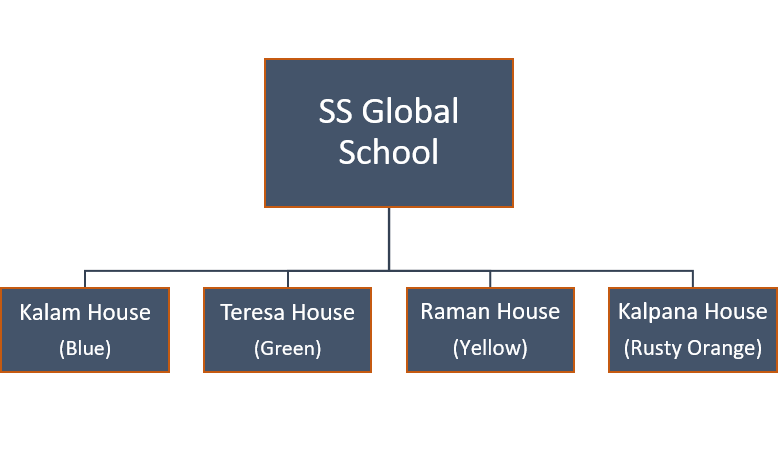
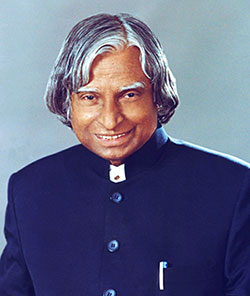
A.P.J. Abdul Kalam, in full Avul Pakir Jainulabdeen Abdul
Kalam, (born October 15, 1931, Rameswaram, India—died
July 27, 2015, Shillong), Indian scientist and politician who
played a leading role in the development of India’s missile
and nuclear weapons programs. He was president of India
from 2002 to 2007.
Kalam earned a degree in aeronautical engineering from the
Madras Institute of Technology and in 1958 joined the
Defence Research and Development Organisation (DRDO).
He soon moved to the Indian Space Research Organisation,
where he was project director of the SLV-III, India’s first
indigenously designed and produced satellite launch vehicle.
Rejoining DRDO in 1982, Kalam planned the program that
produced a number of successful missiles, which helped
earned him the nickname “Missile Man.”
Kalam wrote several books, including an autobiography,
Wings of Fire (1999). Among his numerous awards were two
of the country’s highest honours, the Padma Vibhushan
(1990) and the Bharat Ratna (1997).
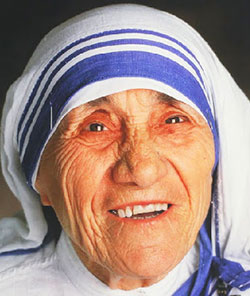
Mother Mary Teresa, in full St. Teresa of Calcutta, also called
St. Mother Teresa, original name Agnes Gonxha Bojaxhiu,
founder of the Order of the Missionaries of Charity, a Roman
Catholic congregation of women dedicated to the poor,
particularly to the destitute of India.
In 1952 she established Nirmal Hriday (“Place for the Pure of
Heart”), a hospice where the terminally ill could die with
dignity. Her order also opened numerous centres serving the
blind, the aged, and the disabled. Under Mother Teresa’s
guidance, the Missionaries of Charity built a leper colony,
called Shanti Nagar (“Town of Peace”), near Asansol, India.
In 1962 the Indian government awarded Mother Teresa the
Padma Shri, one of its highest civilian honours, for her
services to the people of India. In 1979 she received the Nobel
Peace Prize for her humanitarian work, and the following year
the Indian government conferred on her the Bharat Ratna, the
country’s highest civilian honour.
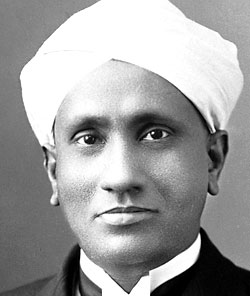
C.V. Raman, in full Sir Chandrasekhara Venkata Raman, (born
November 7, 1888, Trichinopoly, India—died November 21,
1970, Bangalore), Indian physicist whose work was influential in
the growth of science in India. He was the recipient of the Nobel
Prize for Physics in 1930 for the discovery of the phenomenon
also known Raman scattering and is the result of the Raman
effect.
Raman was knighted in 1929, and in 1933 he moved to the
Indian Institute of Science, at Bangalore, as head of the
department of physics. In 1947 he was named director of the
Raman Research Institute there and in 1961 became a member of
the Pontifical Academy of Science. He contributed to the building
up of nearly every Indian research institution in his time,
founded the Indian Journal of Physics and the Indian Academy of
Sciences, and trained hundreds of students who found important
posts in universities and government in India and Myanmar
(Burma). He was the uncle of Subrahmanyan Chandrasekhar,
who won the 1983 Nobel Prize for Physics, with William Fowler.
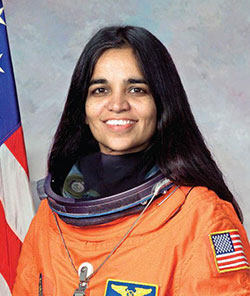
Kalpana Chawla, Indian-born American astronaut (born July 1,
1961, Karnal, India—died Feb. 1, 2003, over Texas), was a
mission specialist on the space shuttle Columbia. Chawla was
the first woman to study aeronautical engineering at Punjab
Engineering College; she continued her education at the
University of Texas at Arlington and the University of Colorado
at Boulder, where she earned a doctorate in aeronautical
engineering (1988). She first flew on the operator.
Kalpana Chawla first went into space in 1997 (in Columbia as a
mission specialist and primary robotic arm) and become the
second Indian person to fly in space after astronaut Rakesh
Sharma. In a horrific disaster, Kalpana Chawla died in 2003 in
the Columbia space shuttle. The shuttle disintegrated over Texas
during re-entry into Earth’s atmosphere on 1st February 2003.
She set a mighty example for being courageous, dedicated, and
an independent woman who set her eyes on space and followed
through with her dream.